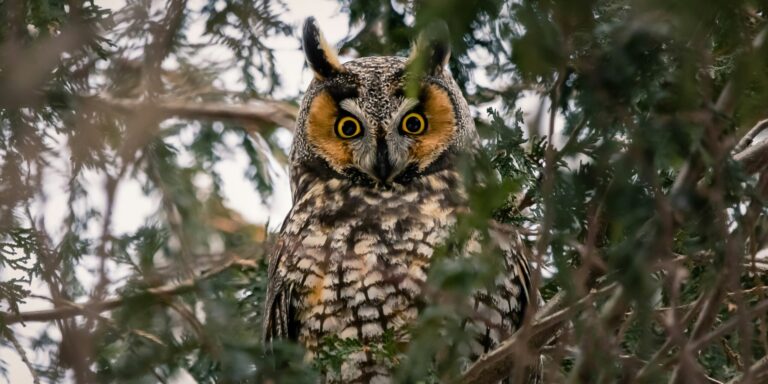On August 4, 2025, wildlife centers, zoos, conservation groups, and classrooms across the United States came together to celebrate two globally recognized observances—International Owl Awareness Day and International Clouded Leopard Day. Although each focuses on a different species in very different parts of the world, both days served a shared purpose: fostering awareness, education, and action for the protection of vulnerable wildlife.
Owl Awareness Day has become a beloved annual event in many inland American communities, offering a way for local organizations to engage families, students, and nature lovers in hands-on conservation education. Rehabilitation centers and nature preserves organized open houses featuring ambassador owls—rescued birds that, due to injury, cannot return to the wild. These owls served not only as compelling living examples of wildlife in need but also as educational tools. Volunteers and staff members delivered interactive presentations about owl anatomy, hunting adaptations, and nesting behaviors, as well as threats such as habitat loss and rodenticide poisoning. Participants learned how simple actions—like avoiding harmful pesticides, maintaining mature trees, or installing nesting boxes—can make a meaningful difference in owl survival.
Many events included activities tailored to young learners. Children dissected owl pellets to learn about food chains, took part in nocturnal nature hikes to listen for owl calls, and participated in arts-and-crafts sessions focused on owl-themed stories and mask-making. In some areas, community members joined virtual presentations hosted by wildlife biologists, discussing regional owl species, migration patterns, and ongoing monitoring efforts. Online engagement extended to social media, where stories of successful owl rescues were shared widely using the hashtag #OwlAwarenessDay, often accompanied by videos and images of owls in rehabilitation or being re-released into the wild.
In parallel with these North American efforts, International Clouded Leopard Day generated increased awareness of one of Asia’s most mysterious and endangered big cats. Observed annually on August 4 since its founding in 2018, the day shines a spotlight on the precarious future of clouded leopards, which inhabit the rapidly vanishing forests of Southeast Asia. With global wild populations estimated at fewer than 10,000 mature individuals, the species faces serious threats from habitat fragmentation, poaching, and the illegal wildlife trade.
Zoos across the U.S.—including institutions in cities like Boston, Atlanta, and Cincinnati—joined the global effort by hosting special educational programs, conservation fundraisers, and family-oriented activities. At Franklin Park Zoo in Boston, visitors were invited to meet Jye, a male clouded leopard housed in the zoo’s Tropical Forest exhibit. Throughout the day, staff members explained the species’ unique adaptations—such as their ability to climb down trees headfirst and their relatively large canine teeth, which resemble those of much larger cats. These traits, while impressive, also underscore how specialized the animals are, making them particularly sensitive to environmental change.
Interactive experiences at zoos included scavenger hunts, animal feedings, behind-the-scenes tours, and coloring stations for children. Educational booths detailed the international conservation strategies being employed to save clouded leopards, such as habitat corridor development, anti-poaching patrols, and captive breeding programs designed to support genetic diversity. Some events also highlighted the work of the Clouded Leopard Species Survival Plan, a cooperative breeding initiative involving multiple zoos across North America.
Meanwhile, wildlife researchers and advocacy groups used the occasion to call attention to new studies revealing that existing habitat corridors often fail to match clouded leopard movement patterns. Conservationists emphasized that protecting the cat’s future will require a more nuanced understanding of how these elusive animals use fragmented landscapes—and a stronger commitment from governments and corporations to preserve primary forest habitat.
Online, zoos and wildlife nonprofits shared videos, photos, and infographics about the clouded leopard’s status in the wild, and encouraged people to support conservation through donations or by spreading awareness. Messages emphasized the global interconnectivity of environmental issues—how the loss of tropical forests in Asia not only threatens wildlife but contributes to climate change and the erosion of biodiversity worldwide.
The convergence of Owl Awareness Day and Clouded Leopard Day created a rare dual-focus opportunity, allowing educators and conservationists to draw connections between local and global ecosystems. Both species play vital roles in their habitats: owls as controllers of rodent populations and indicators of ecosystem health, and clouded leopards as apex predators maintaining the balance of their forest environments. Celebrating both on the same day helped reinforce a more holistic message—that preserving wildlife isn’t just about saving charismatic species, but about sustaining the intricate web of life they represent.
Schools capitalized on the overlap by incorporating both themes into interdisciplinary lessons. Science classes examined owl biology and clouded leopard ecology side by side, while art and writing activities encouraged students to imagine what life is like for these animals. In some districts, virtual visits with zoologists were arranged, allowing students to ask real-time questions about how owls are rehabilitated or what it’s like to track big cats in the wild.
The success of the day underscored the growing public appetite for engaging, science-based wildlife programming. By connecting people—especially young learners—with living animals and real conservation challenges, both International Owl Awareness Day and International Clouded Leopard Day inspired renewed interest in protecting the natural world. While each species faces unique threats, the underlying message remained the same: that awareness is the first step toward meaningful conservation, and that everyone has a role to play in protecting Earth’s biodiversity.



